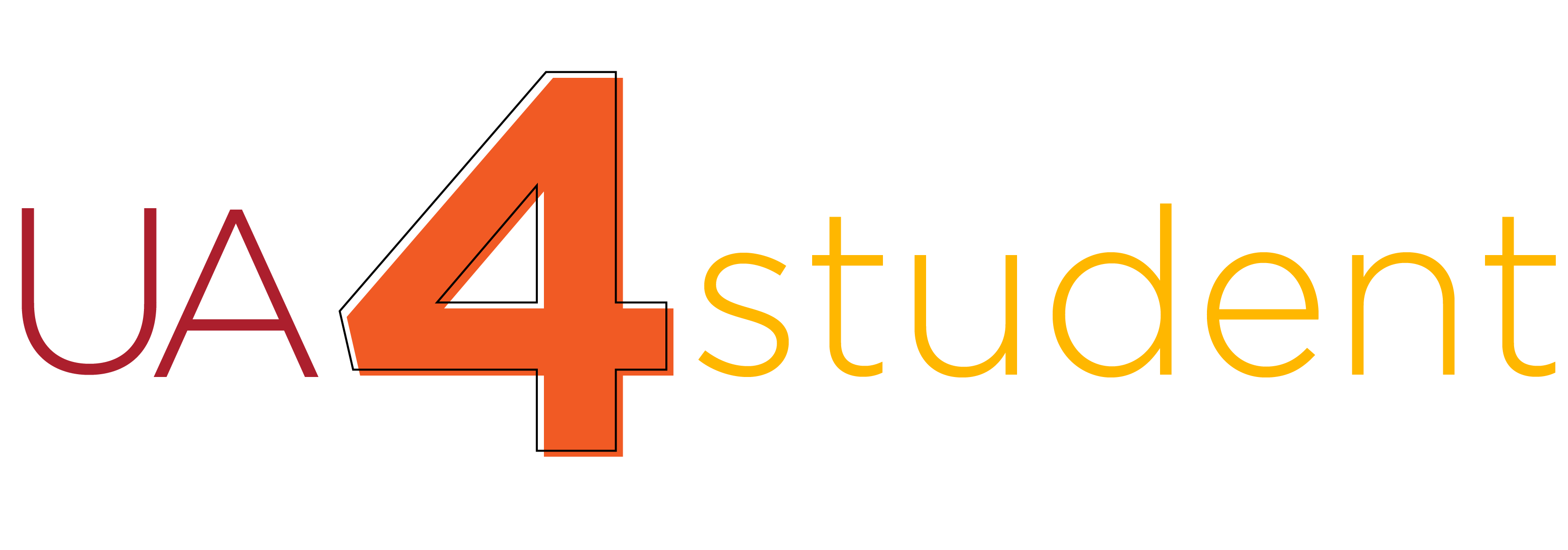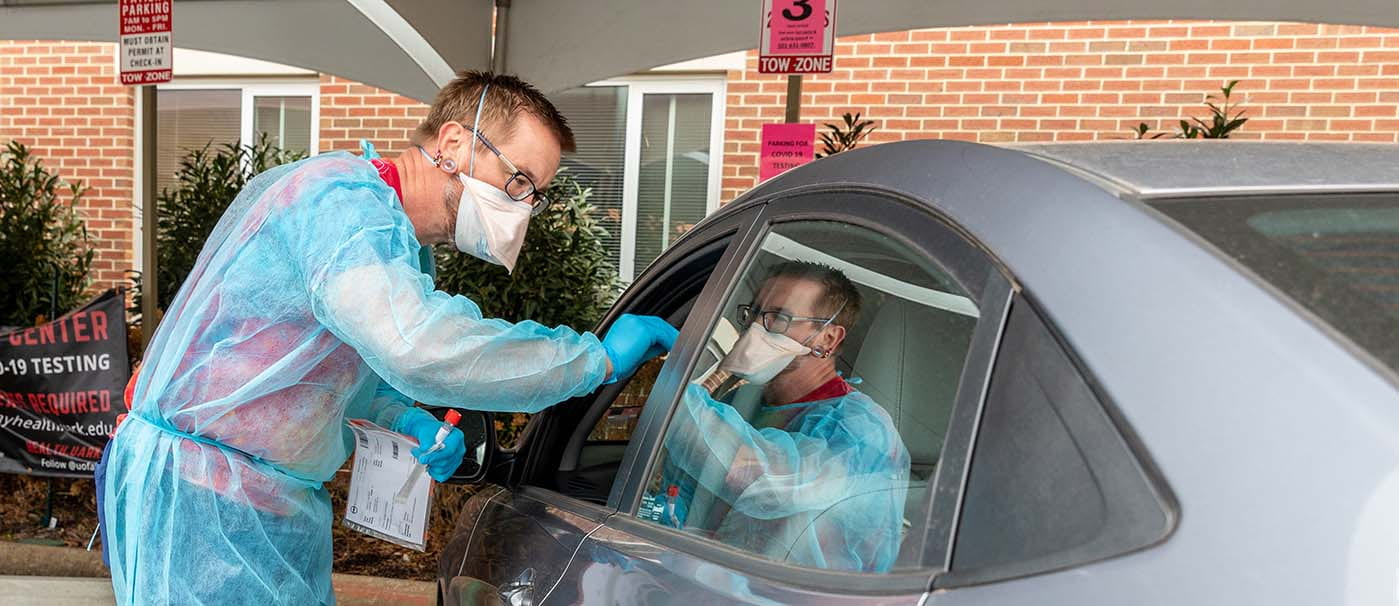
When you look back on this past year-plus, it’s easy to sum it up with the most obvious things related to the COVID-19 pandemic. I assume the vast majority likely think of face masks, frequent hand washing, social distancing, remote learning/work, ‘safe at home,’ and Dr. Fauci. And while yes this is generally what I think of as well, there is one thing that really stands out to me more than anything — the constant need to pivot.
There is nothing like a pandemic to change the rules of work — making us pivot on the fly, then pivot again when we least expect it — all while simultaneously keeping up with the ever-changing, fast-developments in the world of COVID-19 news.
Over the past year, Pat Walker Health Center has been faced with one unique challenge after another as we continuously reimagined what it means to operate an on-campus health center during a pandemic with remote learning.
We have constantly been required to adapt to challenges in real-time and pivot based off of the best information available at the time. This has been evident even before COVID-19 reached our campus when our infectious disease preventionist and Director of Nursing Lyn Edington began tracking a pneumonia-like illness originating out of the Wuhan Province of China.
On Jan. 22, 2020, the University’s Communicable Disease Outbreak Committee (CDOC) — already overburdened with mitigating a significant Mumps outbreak —added this novel coronavirus as a looming and serious public health threat to our campus community thus identifying the next major pivot for our team and campus.
And then it happened, like a flip of the switch. On Feb. 4, 2020, PWHC participated with other campus partners in what would be the first public discussion on our campus of what would later come to be known as COVID-19.
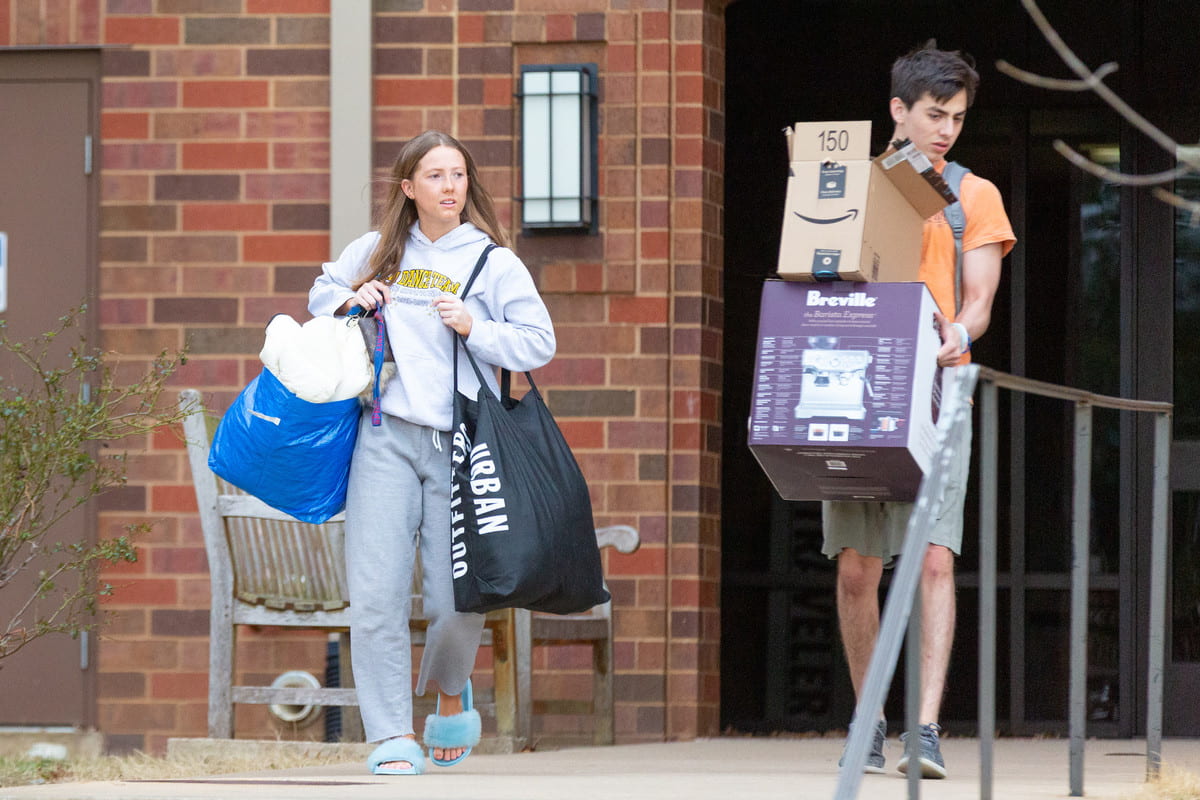

As we continued to learn more and more about this novel coronavirus, prevention and mitigation efforts were becoming clearer. In early March, CDOC recommended that all U of A employees and students be required to return from international locations with each growing travel ban.
By March 5, 2020, PWHC leaders were deep into discussions on how to efficiently and effectively screen/treat our campus population once the disease reached our geographic area. Not long after, this mysterious virus reached our area. We conducted our first COVID-19 test on March 17th, which would turn out to be our campus’ first positive case.
On March 18, 2020, Chancellor Steinmetz historically announced campus would pivot to remote operations thus setting in motion a continuous cycle of urgency, uncertainty and change, not only for Pat Walker Health Center, but the entire campus community.
At this point, the COVID-19 Campus Response Team and subsequent committees were formed and so began the most collaborative, detailed-driven public health safety and mitigation effort in the history of the University of Arkansas. An effort that has since demonstrated the importance of the health center’s continuous effort to strengthen relationships with many campus units.
This is important because 1) we already had relationships with other campus entities for implementation of public health measures and 2) Other entities demonstrated their anticipation of safety and mitigation practices – especially FAMA, Housing and Dining.
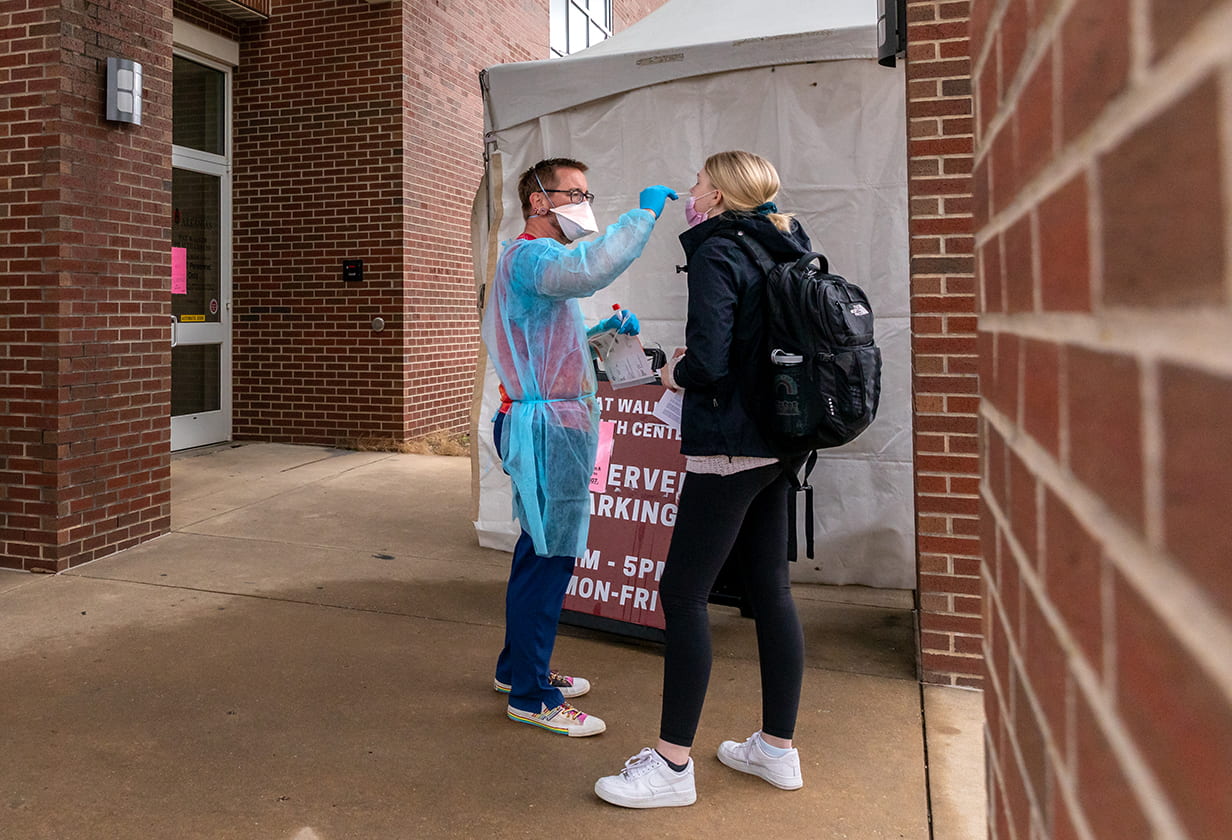
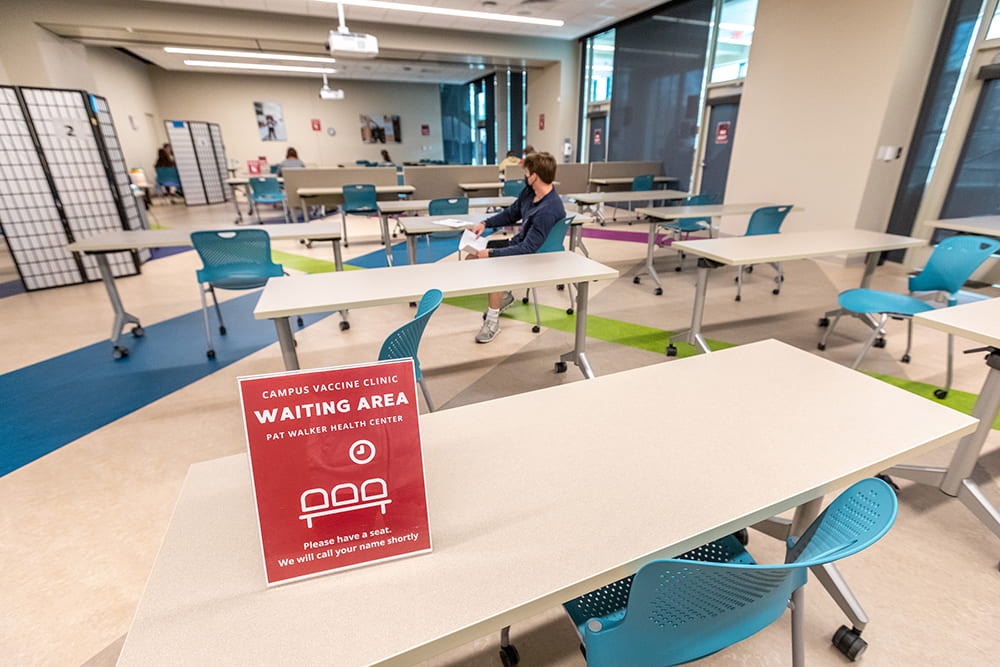
On-Campus COVID-19 Testing and Care Begins and Evolves (A lot)
Despite much of campus now working remotely, PWHC medical teams remained on site to continue care for the campus community and assist with testing our community throughout the remainder of the 2020 Spring/Summer semesters.
The health center went through multiple iterations of COVID-19 testing and care. Our medical staff had a lot to keep up with, new research and published articles, the Centers for Disease Control (CDC) and our ADH releases and directives. Even the slightest of changes required tweaks in scheduling guidelines, our treatment locations and staff job duties.
“While COVID-19 and regular medical care is our job, the measures to research, mitigate, test and provide care amidst the pandemic were extraordinary,” said A.J. Olsen, director of medical services for PWHC. “Countless hours were (and are still are) spent staying up-to-date with emerging developments related to treatment, testing, vaccines, mortality and mutations.”


The below is only a snapshot of the lengths PWHC went to ensure reliable COVID-19 testing and care:
- APRIL 16, 2020: Our first alteration for COVID-19 testing included a separate entrance for symptomatic individuals through our ambulance bay, and testing in our isolated treatment rooms. This required infection control protocol changes (air exchange in swab room must remain empty for 45-minutes prior to next patient). This also required staggering patient appointments to assure safety for our patients and staff members.
- MAY 2020: Our team began extensive research on rapid antigen testing for symptomatic patients. We requested Abbott ID Now instruments and test kits for our campus to prepare for flu season. As testing supplies became more available, so did our complete testing program.
- JUNE 2020: The next shift was to offer drive up COVID-19 testing in our Garland Garage starting in June 2020. This further mitigated the virus and protects patients and personnel as testing is conducted in open air and individuals do not leave their vehicles to travel and potentially unknowingly infect others. This testing site has since been converted to a drive-up Respiratory Illnesses Clinic and now provides campus with a well-staffed satellite clinic complete with medical providers, lab personnel and nurses.
- 1-3, 2020: With an early spike in COVID-19 cases, PWHC hosted a drive-through COVID-19 testing event for all members of the campus community in the parking lot across from Baum stadium. This clinic proved most crucial as we were able to quickly identify and isolate positive cases early to mitigate the spread. In total, around a quarter of 1,500 tests conducted returned positive results. The success of this event — which couldn’t have been possible without the help of campus staff and nursing student volunteers — eventually laid the groundwork for a successful drive-through flu vaccine clinic.
- 6-7, 2020: To increase efficiencies and overall patient experience, we split our internal medical team into three separate teams to accomplish medical care through our regular on-site visits as well as TeleVisits. We had another team dedicated to PCR testing for asymptomatic individuals, and another rotating team for symptomatic testing in our Garland Garage location. By December of 2020, we expanded the number of providers available to see symptomatic students to three.
PWHC staff consistently worked on Saturdays all throughout the Fall semester in order to follow up on COVID-19 test results. Our team also worked through every holiday break to assure patients had their COVID-19 results and to assure our community contacts and information stayed up to date.
“In addition to our usual treatment locations, our team now works inside and now outside in the elements on a daily basis. We battle heat, cold, rain, snow and wind and still provide testing and care with positive attitudes,” said Olsen. “The amount of time and effort Pat Walker Health Center has exerted this past year cannot be measured simply by hours worked.”
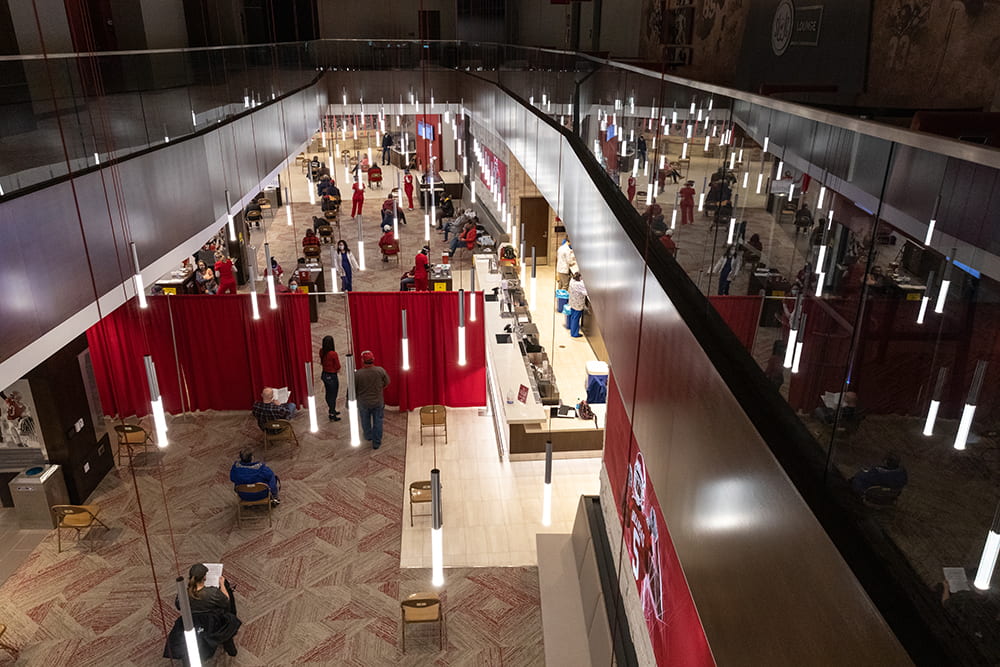
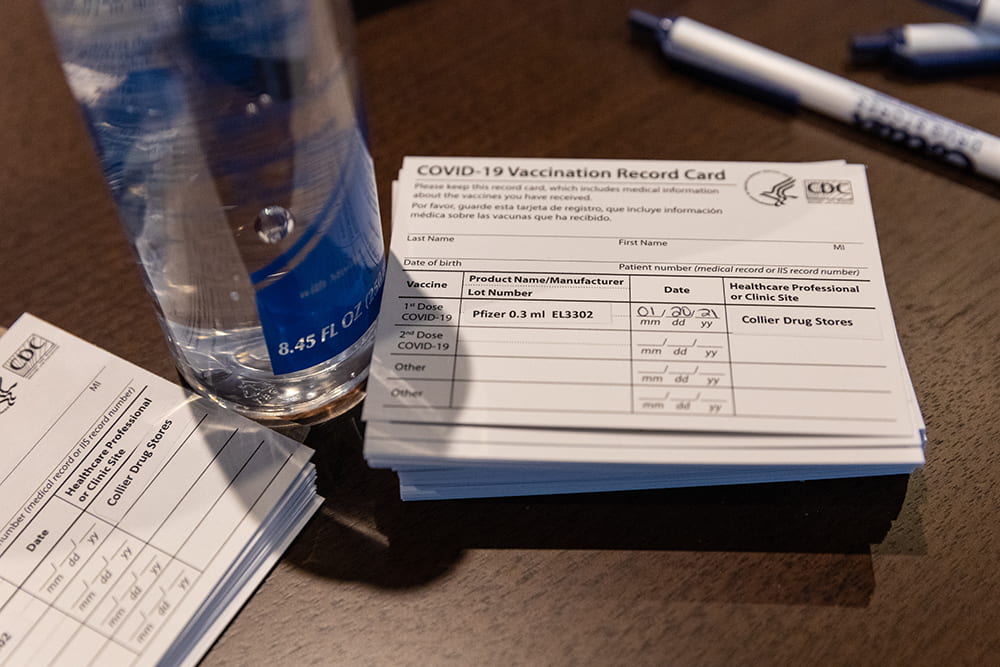
Fast Forward to Now
Even today, the PWHC medical team continues to overcome challenges and pivot accordingly. With the recent pause to the Johnson & Johnson (Janssen) vaccine appointments, the health center once again had to quickly pivot to ensure on-campus vaccine appointments could resume.
“I am so proud and grateful for the team that stands beside me each, and every day,” said Olsen. “We fought to remain; we struggled to keep up with changing guidelines, we researched to the ‘nth’ degree any and all available data, we innovated to provide care outside our usual delivery model and outside the walls of our health center clinic.”
Pandemic management and response became a critical part of our jobs; an extreme example of “other duties as assigned” that none of us anticipated a year ago would measure to this extent.
But public health response and keeping our campus community safe, healthy and aware has always been our mission. And once you master the art of pivoting in times of crisis, there’s nothing that will stand in our way of supporting our campus community.
“I believe we prevailed during one of the most difficult times for medicine in ‘our’ history. We were successful not because of one individual, but because of ALL of us,” said Olsen. “We are honored to be of service to our university community”
By Zac Brown, Assistant Director of Communications, Pat Walker Health Center
Read how PWHC went from an on-campus clinic to supporting student health amidst the COVID-19 digital age.
